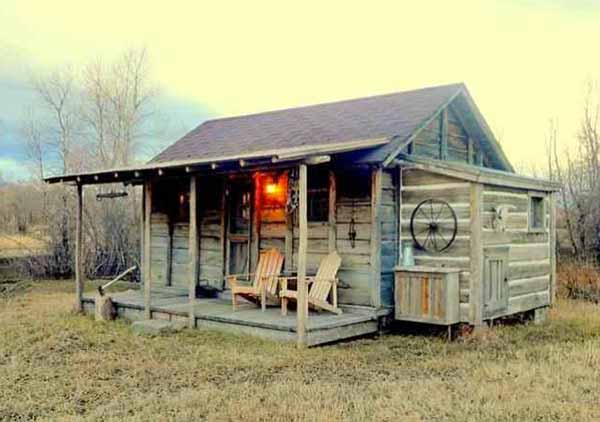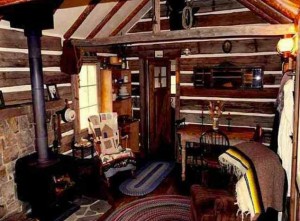
By Ruffin Prevost
When soldiers from the U.S. Army were assigned to protect the wildlife and resources of Yellowstone National Park in the late 1800s, many stayed in primitive cabins that could hardly be considered glamorous—or even quaint. But now, one of those cabins is up for sale and attracting widespread interest for its historic charms.
A cabin formerly used by soldiers in Mammoth Hot Springs, Wyo. was listed for sale online at an asking price of $37,500, drawing more than 15,000 views in just a few days.
“As you can imagine, I’ve been inundated,” said Livingston, Mont. real estate broker Bruce Ray, who is selling the cabin for his client, a local craftsman who lovingly rehabilitated the 224-square-foot building.
Unfortunately for Ray, the ad wasn’t entirely clear at first that only the structure was for sale, and that it had to be moved at the buyer’s expense from its current location.
After fielding calls from a nationwide flood of dreamers and Yellowstone fanatics who had wrongly assumed the structure was part of a park-adjacent land parcel, Ray was frustrated, but still optimistic that the right buyer would come along soon.

“The gentleman who restored it really did a fabulous job,” Ray said. “It’s so charming. You go in and sit on the porch, and you just feel something about times past that immediately comes over you.”
Those “times past” were before the creation of the National Park Service in 1916, when the Army patrolled Yellowstone to crack down on poachers. In areas like Mammoth and in more remote spots, soldiers built simple, rustic and functional cabins to use during patrols or as regular living quarters.
The structure Ray is selling has been fixed up, but not meticulously restored to its original state, he said. Though it is equipped with solar power, the cabin has no plumbing.
The cabin is listed on a website that specializes in so-called “tiny houses,” a modern craftsman movement aimed at building functional, comfortable living spaces in the smallest footprint possible.
“It’s the quintessential Yellowstone take on the tiny house,” he said.
The cabin would hardly seem out of place on any Montana or Idaho ranch, he said, because many old soldier cabins from Yellowstone can still be spotted today in Livingston and the surrounding area.
Dozens of cabins still stand in Yellowstone
In fact, three dozen historic cabins built before the 1940s still stand in Yellowstone Park today, and many are regularly used by park rangers, researchers and others doing work in the backcountry, said Tom Porter, corporate relations manager for the Yellowstone Park Foundation.
Porter said that rehabilitating those historic Yellowstone cabins has been a major initiative over the past four years for YPF, the park’s official fundraising partner.
“The cabins are an integral part of helping the park execute its mission,” Porter said. “Many people don’t realize the extent to which rangers still use these cabins. And other than the high-tech lithium ion batteries in a ranger’s radio, the technology in the cabins hasn’t evolved much since the early 1900s.”
The goal is not to restore the cabins to a state of archaeological accuracy, but to rehabilitate them so they can be maintained regularly and affordably by the National Park Service as part of normal operations, Porter said. But the fix-ups can be costly when work must be done by hand tools, sometimes requiring a pack string or helicopter to move heavy gear to remote spots.

Through an adopt-a-cabin program and other efforts, YPF is currently focusing on funding the rehabilitation of four historic ranger patrol cabins identified by the Park Service. Among those four is the Harebell Patrol Cabin, built along the park’s southern boundary by the Army between 1912 and 1920. Another is the the Thorofare Patrol Cabin, near the southeast border, one of the most remote occupied dwellings in the contiguous U.S.
Contact Ruffin Prevost at 307-213-9818 or [email protected].
